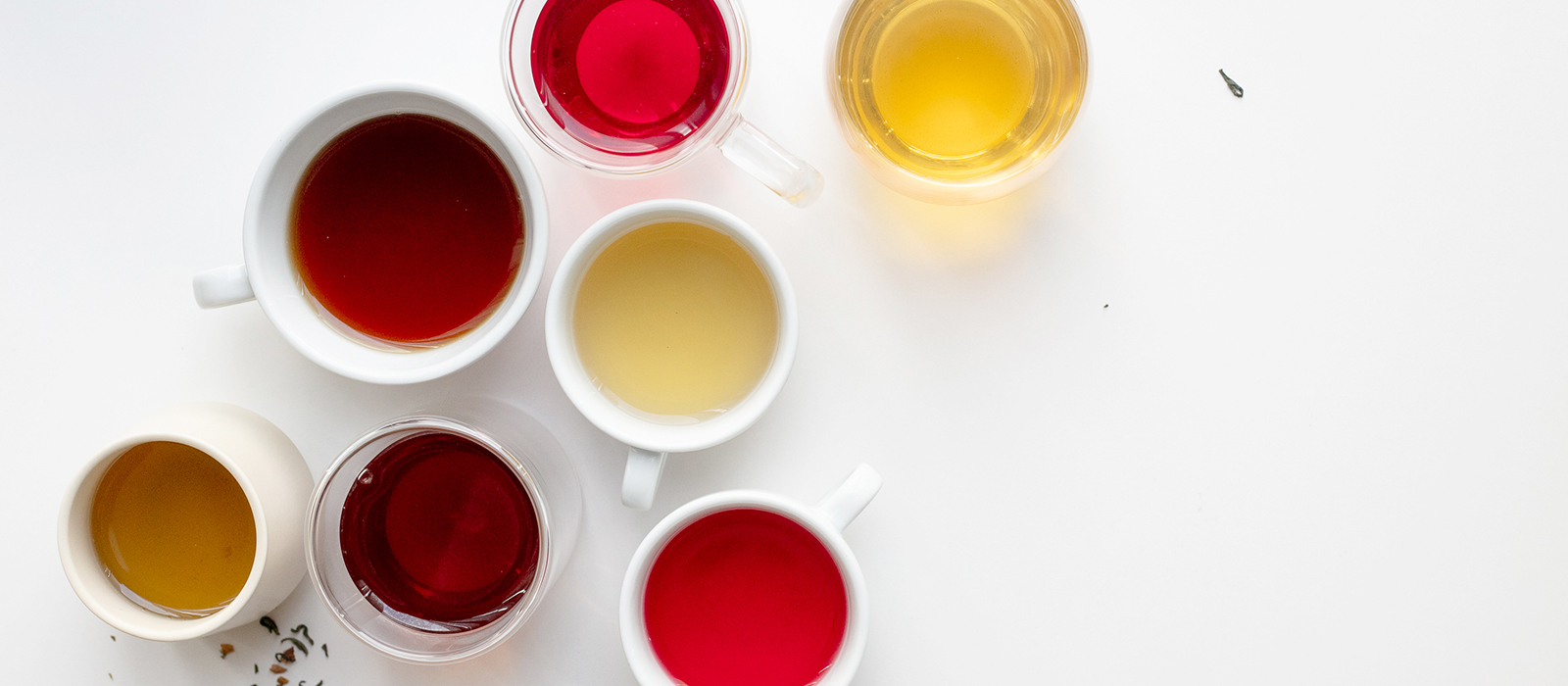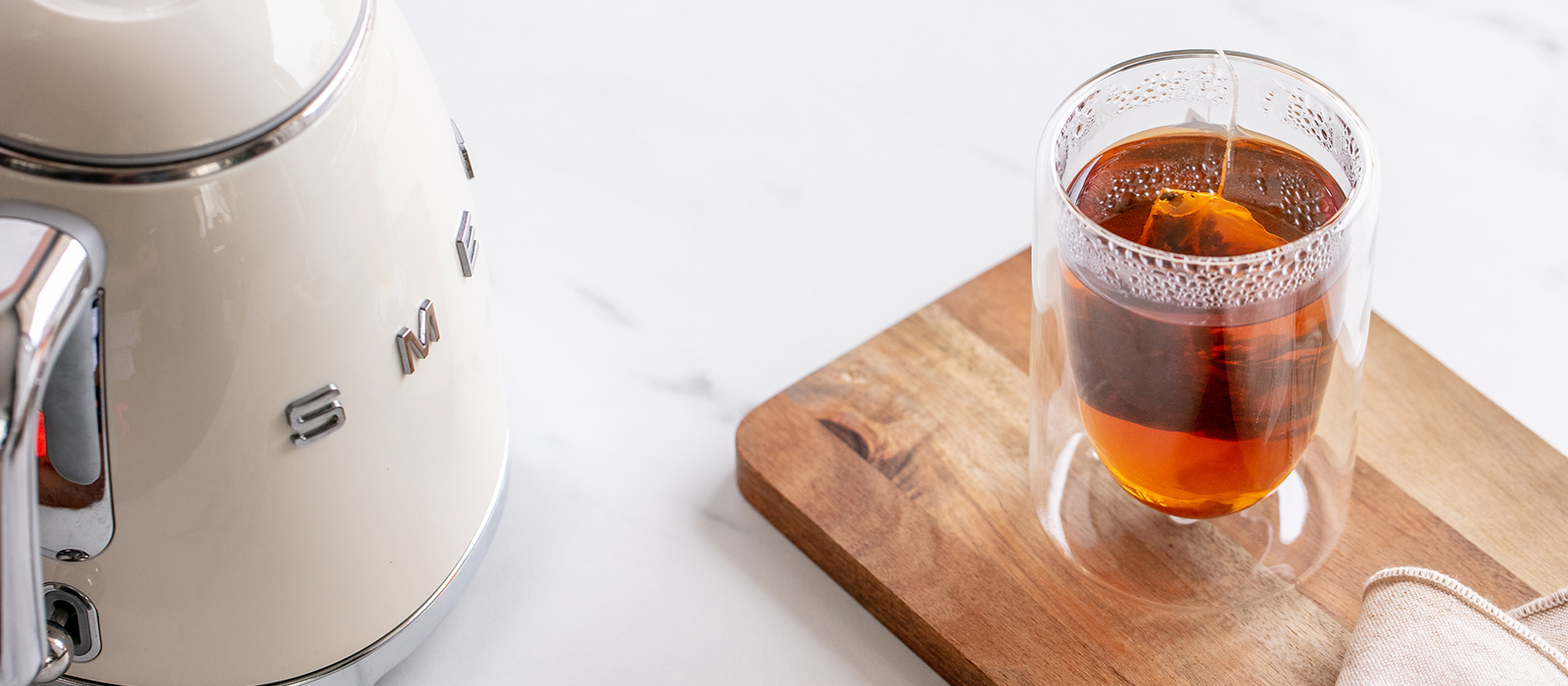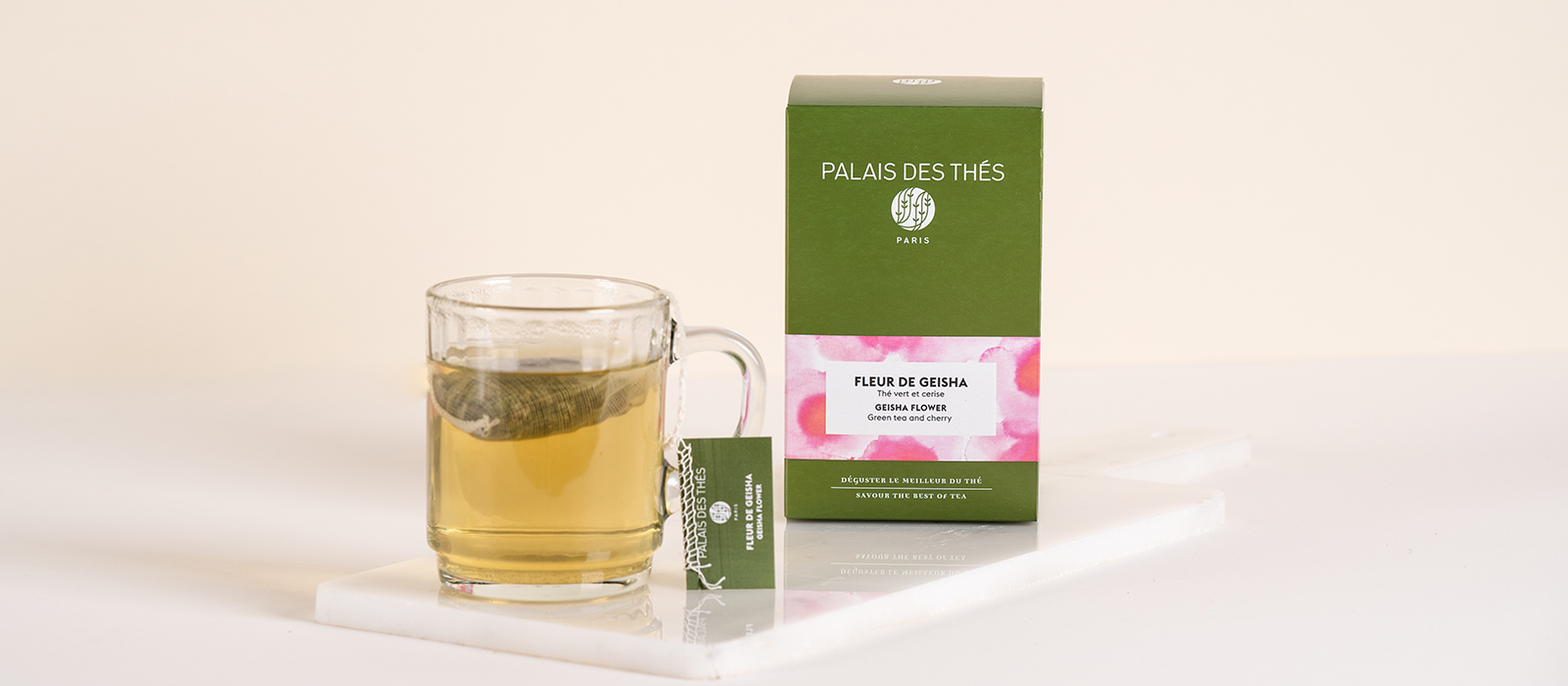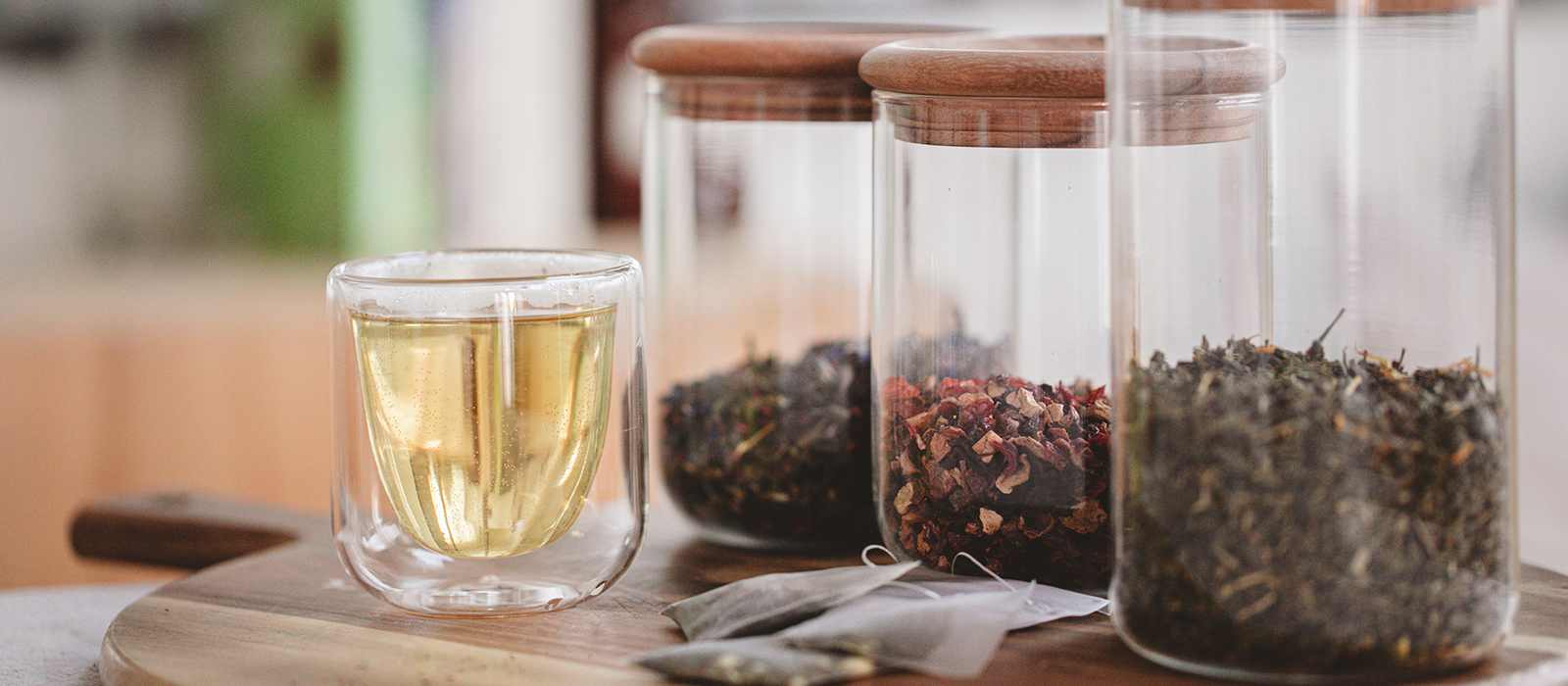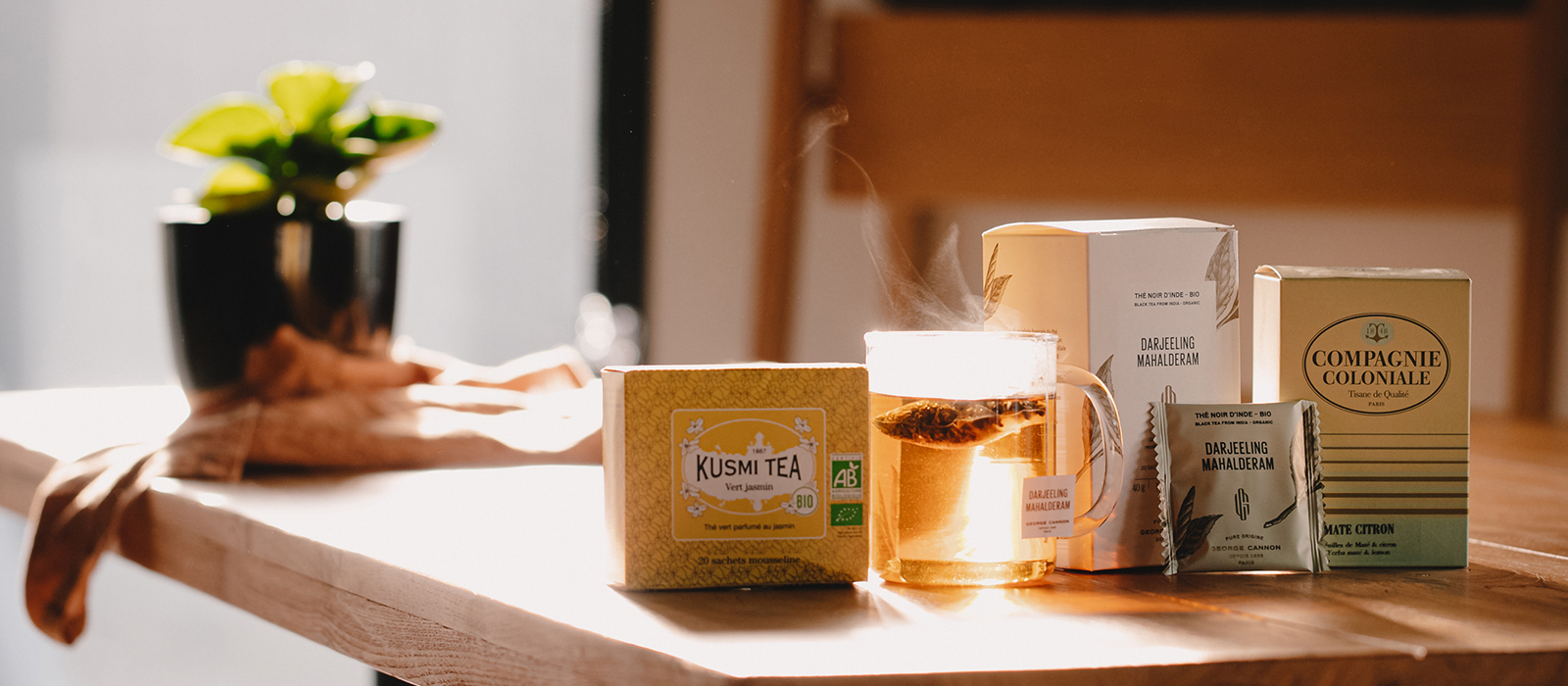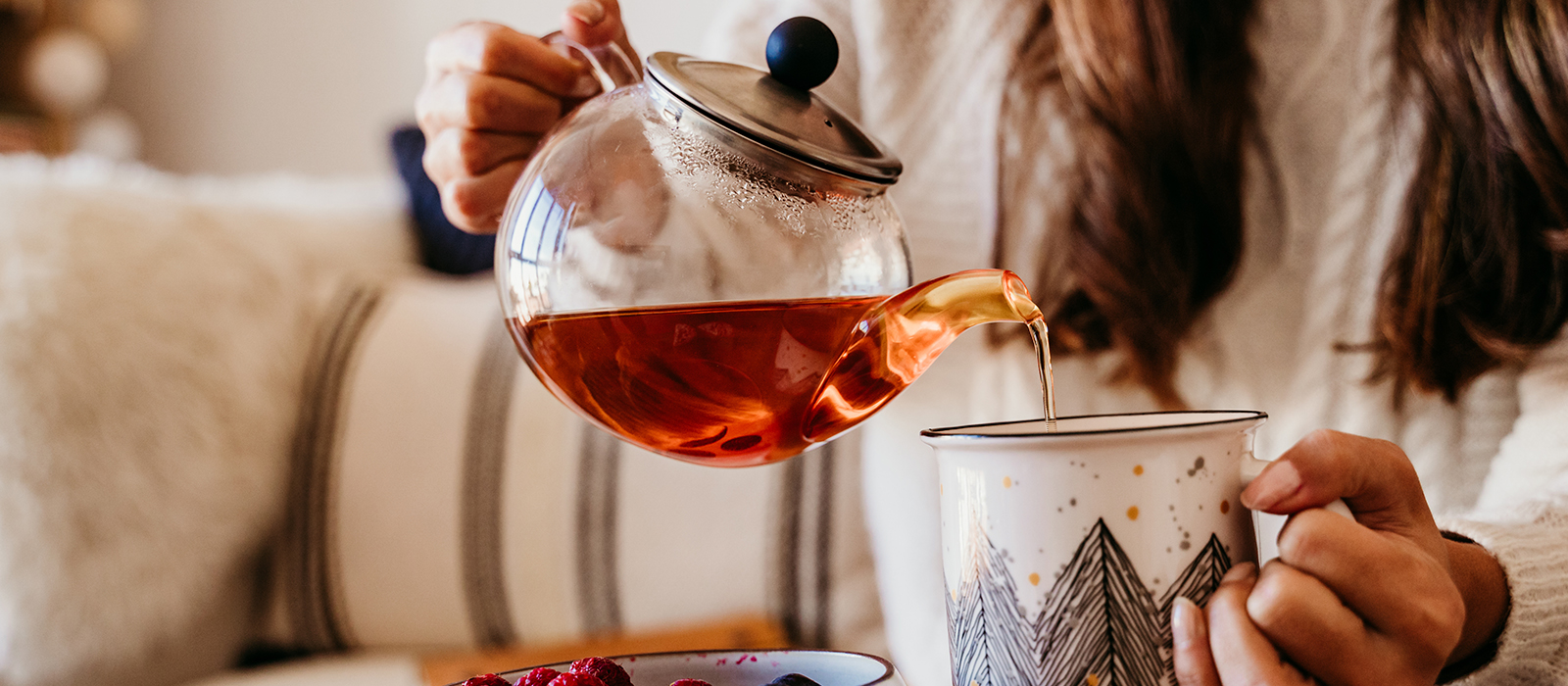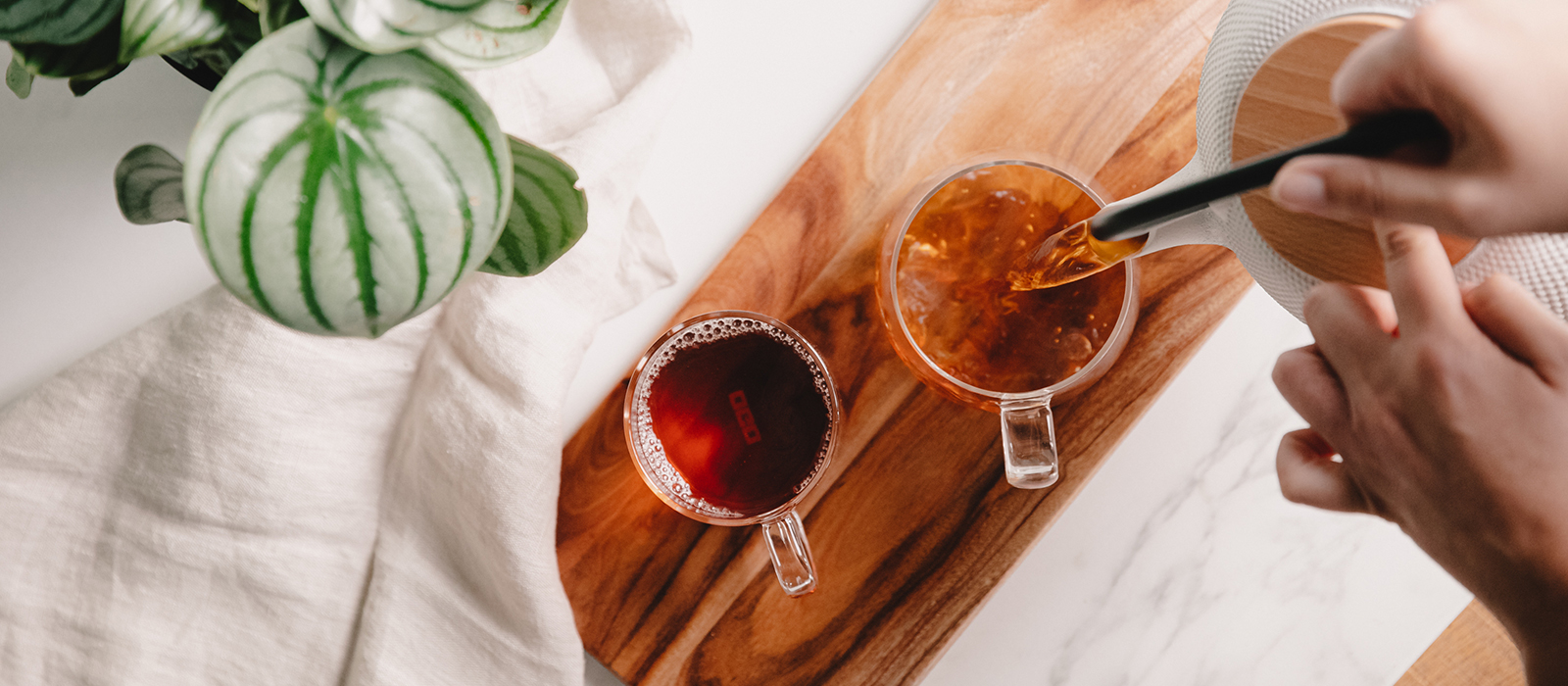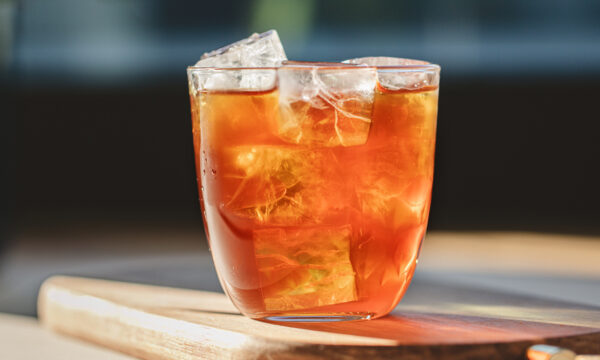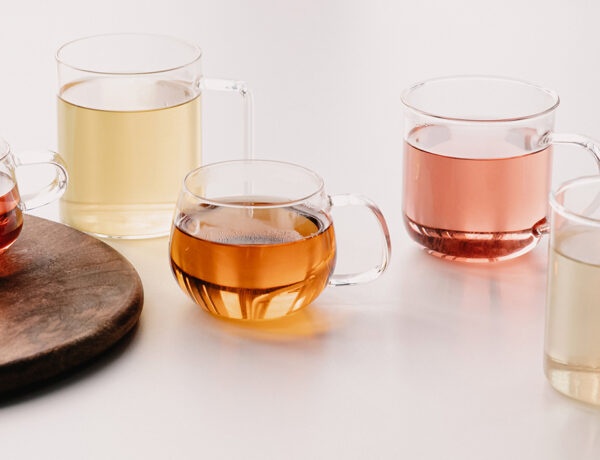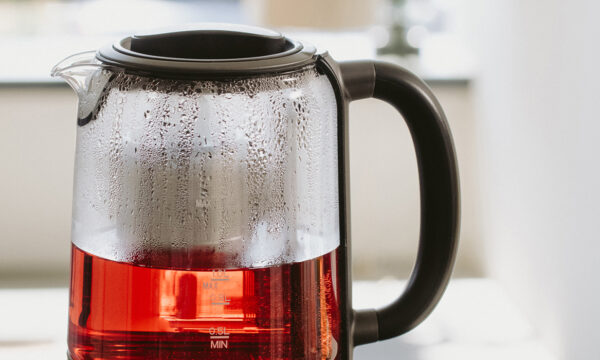
- Home
- The Different Types Of Teas: Varieties, Tastes And Preparation
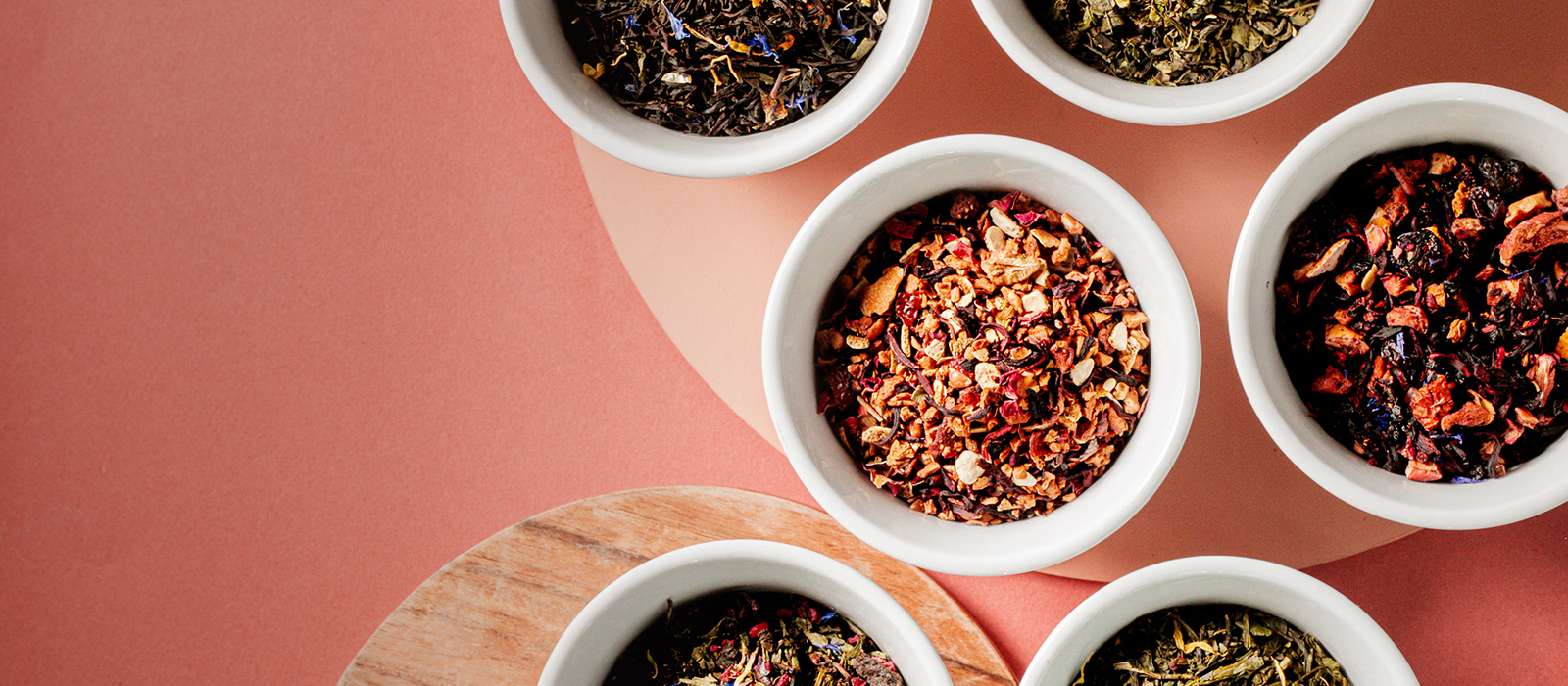
The Different Types Of Teas: Varieties, Tastes And Preparation
Written by Alice
Reading time 11 minTea, like coffee, is one of the most widely consumed beverages in the world. It comes second only to water as the most consumed beverage in the world. There is a wide variety of teas. Not only are there black, green, and white teas and more.
But within those categories, tea varieties abound. It is estimated that there are anywhere between 1,500 and 3,000 varieties of teas. What’s more, the names used to define these teas often vary between the Western and Eastern worlds. Here’s everything you need to know about the different types of tea!
What is tea?
Before exploring the different types of tea from all over the world, let’s go back to basics and ask ourselves: what exactly is tea?
What plant does tea come from?
Tea comes from a plant: the tea plant.
The tea plant is a camellia (Camellia sinensis), a shrub in the large Theaceae family. There are three main varieties of tea plant:
- the one originating in China, known as sinensis, with small, olive-green leaves;
- assamica, from Assam, with a broad, light-coloured, fleshy shoot;
- cambodiensis, discovered in Cambodia, which is no longer cultivated.
Just like the different types of vine, there are several varieties of tea plant, some of which are better suited to producing green tea, others black tea and so on.
But all of these varieties can be used to make any kind of tea: freshly plucked tea leaves can be used to make teas of all colours: green, black, blue-green (oolong), white, yellow…
The different colours of tea are mainly linked to the level of oxidation and not to the variety of tea plant. In the world of tea, this phenomenon of colour change is called “fermentation”.
Tea oxidation, also known as fermentation
The idea: oxidation is a natural phenomenon whereby all plants, once plucked, begin to wither and oxidise. When it comes to tea making, controlling this process determines the colour of the tea and much of its taste.
For black teas, for example, oxidation is completed and the leaf is 100% oxidised. For green teas, there is no oxidation. For oolong teas, oxidation is interrupted and the leaf is only partially oxidised.
It should be noted that there is only one type of tea that is really ‘fermented’ in the original sense of the term. They are specific types of Chinese dark teas such as Pu-erh tea which improve with age.
Black Tea
Black tea is one of the most widely consumed teas in the world. Native to China, it is said that it was in the 17th century, after a particularly long journey to London, that a cargo of tea oxidised in the transport crates.
The tea turned from green to black, and the English instantly took a liking to it. Today, black tea is very popular in the UK (English Breakfast and Earl Grey, for example).
How is black tea made?
Once the tea leaves have been picked, they undergo a withering process to give them a supple texture that makes them suitable for rolling. During this stage, the fresh leaf already loses 50% of its water.
After withering, the leaves are rolled (a different process to that used for green tea, as we’ll see below) to break up the cells and facilitate the enzymatic oxidation reactions. The more the leaves are rolled, the fuller-bodied the tea will be.
Once rolled, leaves are left to oxidise for between 1 and 3 hours, depending on the quality of the leaves, the season, the region and the desired colour of tea.
What does black tea taste like?
There are many black teas from all over the world: spring, summer or autumn black tea, black tea from India, Nepal, China or Sri Lanka…
Generally speaking, black tea has a rich, intense flavour that is generally described as full-bodied compared with other types of tea. It is also one of the most caffeinated teas.
How do you prepare black tea?
To prepare black tea and enjoy all its flavours, it should be brewed in water heated to between 85 and 90°C for 3 to 4 minutes.
Green Tea
Green tea is by far the most popular Chinese tea. But Japan, which produces exclusively green teas, is now beginning to rival Chinese teas in terms of quality.
How is green tea made?
The methods used to make green tea may vary from country to country, region to region, or even according to the expertise of the producers, but the main stages are all the same.
Green tea is a non-oxidised tea. To prevent oxidation after plucking, the leaves are brutally heated to around 100°C, either in basins (in China) or with steam (in Japan), for 30 seconds to 5 minutes. The leaves then become soft and pliable for rolling.
The leaves are then shaped into different forms: stick, ball, twisted or leaf-shaped. Then, as for black tea, the leaves need to be dehydrated, though more radically, as this is essential for keeping the tea in good condition. They are dried in a dryer for 2 to 3 minutes.
What does green tea taste like?
Because of how it is made, green tea has a fresher, more herbal flavour than black tea. It also contains less caffeine.
Generally speaking, green tea is milder and more refreshing.
How do you prepare green tea?
For Chinese green teas, heat your water to 70°C and leave to infuse for 3 to 4 minutes.
For Japanese green teas, the water temperature and infusion time vary according to the tea. For Gyokuro, infuse for 1 minute at 50°C. For Sencha Ichibancha, brew for 2 minutes at 70°C. For all other Japanese green teas, infuse for 3 minutes at 80°C.
For Matcha green tea, which is a Japanese green tea powder made from finely powdered dried tea leaves, sift 1-2 tsp matcha into a cup using a small sifter. Add 2oz of 80°C water. Whisk vigorously in a zig zag motion until the tea is frothy. Now simply enjoy your matcha tea!
White Tea
White tea is very pure and undergoes very little human manipulation. Traditionally, white teas are a speciality of the coastal province of Fujian, in south-east China. But other countries such as Nepal, Taiwan and Sri Lanka also produce white teas.
How is white tea made?
To make white tea, the buds of the tea plant are picked, along with the leaves when they have just sprouted. No oxidation, fermentation or rolling takes place afterwards. The leaves are only slightly withered and then dried.
What does white tea taste like?
White tea is delicate, light and mild. It has a low caffeine/theine content. It generally has fine floral and fruity aromas, such as apricot, lavender, citrus or peony.
How do you prepare white tea?
As we have seen, white tea is a particularly delicate tea. To avoid burning the leaves, the water temperature used for the infusion must be controlled. We recommend using water at 60°C, leaving the leaves to infuse for between 6 and 8 minutes. It is prepared either in a teapot or using a Gaiwan.
Oolong Tea
Another very popular variety of tea is Oolong tea. Oolong tea is neither green tea nor black tea, and is only partially oxidised.
The different types of Oolong tea
There are two distinct varieties of Oolong tea:
- lightly oxidised teas (10-15% oxidation) prepared using a “Chinese” method;
- highly oxidised teas (60-70% oxidation), made using a method more commonly found in Taiwan.
How is Oolong tea made?
To produce Oolong tea, the leaves must start oxidising and then the process must be stopped. To do this, the leaves are left in the sun to wither and begin the oxidation process.
Next comes the most important step in preparing semi-oxidised teas: sweating. The tea leaves are placed in a temperature-controlled room at between 22 and 25°C, with a humidity level of 85%.
They are stirred regularly under increasing pressure. This allows the aromas to develop and helps the water to evaporate. The longer this process takes, the higher the final degree of oxidation.
Once the leaves have reached the desired degree of oxidation, they are roasted. Finally, they are rolled into small balls, dried and packed.
What does Oolong tea taste like?
Oolong tea has different flavours depending on the degree of oxidation. Low oxidation reveals herbal notes and floral flavours, reminiscent of cut grass, white flowers (lily of the valley, jasmine) or mimosa. Further oxidation reveals more woody and fruity notes, with hints of vanilla, prunes and liquorice.
How do you prepare Oolong tea?
There are two ways to prepare Oolong tea: the traditional (Western) method or the Gongfu Cha method.
The first, traditional method is the most common, and is the one used to prepare most teas: heat water to 95°C, pour it over the tea leaves and leave them to infuse for 6 minutes.
The Gongfu Cha technique is used in China and Taiwan. This method involves infusing the tea several times in quick succession to reveal different aromatic notes with each infusion. The water is heated to 95°C and each infusion lasts between 20 and 60 seconds.
Pu’er tea
Pu’er, or Pu-erh is an unusual tea, with aromas that can sometimes be quite surprising. Pu’er is the most well-known of the dark teas and the only tea that is truly fermented.
How is Pu’er tea made?
Much like with green tea, there is an additional stage after drying, where the leaves ferment for several years.
There are two types of Pu’er.
Raw Pu’er
To make raw Pu’er, also known as Sheng Pu-erh, the briefly pan-fried tea leaves are then left to dry in the sun. The goal is to slow down oxidation to a snail’s pace. The leaves are then compressed into small bricks or cakes and steamed before being stored in a damp, ventilated, warm place. Oxidation then takes place slowly over the years.
Ripe or cooked Pu’er
Ripe Pu’er, also known as cooked Pu-erh or Shou Pu-erh, is fermented. This is done by spreading out the dried leaves on the ground and then sprinkled with water before being covered with a tarpaulin, under which they ferment under the effect of heat and humidity.
During the process, the tea is continually turned. This effectively makes tea compost and the entire process takes about a month to complete. Once this process is complete, the leaves are dried and then either kept loose or compressed.
What does Pu-erh tea taste like?
Pu-erh tea offers a highly distinctive syrupy wine aroma, with notes of tobacco, leather and damp earthy aromas.
How do you prepare Pu-erh tea?
Whether cooked or raw, Pu-erh is prepared with 90°C water and infused for 4 minutes. It can also be enjoyed using the Gong Fu Cha method.
Red Tea or Rooibos
Contrary to popular belief, rooibos is not tea. It does not come from the same tree (of the Camellia sinensis family) and has no theine content. What’s more, it grows exclusively in South Africa on a small shrub of the same name. Its nickname ‘red tea’ comes from its reddish-brown colour and its taste, which is similar to black tea.
How is rooibos tea made?
Rooibos is harvested at the beginning of the year, during the South African summer season. The plants are cut, their leaves chopped and crushed and subsequently dampened before being arranged in outdoor piles. The oxidation process follows, leading the plant to transform in colour, adopting the distinct red hue. Finally, the leaves are dried to decrease their moisture content.
What does rooibos taste like?
Renowned for its many virtues, rooibos, enjoyed as an infusion, is appreciated the world over for its delicate flavour. Free from caffeine and low in tannins, it can be savoured at any hour of the day.
How do you prepare Rooibos?
Although not technically a true tea, rooibos is often prepared similarly, through infusion. It’s important to note that rooibos lacks theine or caffeine, rendering it a versatile option for consumption throughout the day.
Combining Different Teas: Detox Teas
Have you heard of detox teas?
Detox teas are made from a combination of teas and various herbs and spices that are thought to have detoxifying properties. People drink it for its antioxidant properties and its high nutrient and polyphenol content. This helps the body to fight chronic diseases, premature ageing and stress, and improves immunity.
Why Do The Names Of Teas Sometimes Vary?
In Asia, they call red tea the black tea we drink. What they call black tea is in fact Pu-erh tea, because the colour of its infusion is close to black.
Our Asian neighbours define the colour of tea by the colour of the infusion. Whereas we base our definition on the colour of the leaf.
By now you know all about the various types of tea. Each tea has its own specific oxidation and cultivation techniques. For more information on the world of tea, read all our articles on the subject. You can also find all our different types of loose teas, teabags and tea boxes on our website.
Discover all of our articles
